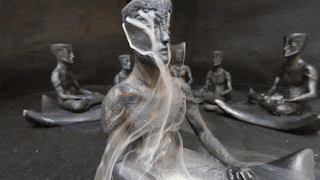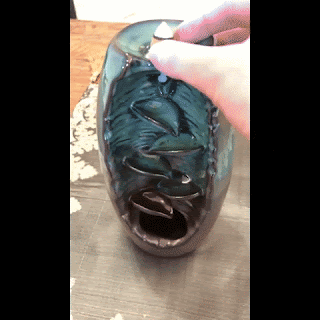Francisco de Asís Tárrega y Eixea (21 November 1852 – 15 December 1909) was a Spanish composer and classical guitarist of the Romantic period.
Tárrega was born on 21 November 1852, in Villarreal, Province of Castellón, Spain.
It is said that Francisco's father played flamenco and several other music styles on his guitar;
When his father was away working as a watchman at the Convent of San Pascual, the child would take his father's guitar and attempt to make the beautiful sounds he had heard.
Francisco's nickname as a child was "Quiquet".
As a child, he ran away from his nanny and fell into an irrigation channel and injured his eyes.
Fearing that his son might lose his sight completely, his father moved the family to Castellón de la Plana to attend music classes because as a musician he would be able to earn a living, even if blind.
Both his first music teachers, Eugeni Ruiz and Manuel González, were blind.
Instead of purchasing a pet from a breeder or pet store, adopt from our adoption center or one of our off-site Stray Animal Problem In The USA-Read to learn about 10 Ways to Decrease the Number of Stray Animals.
When you adopt from the CCSPCA, your adoption fee includes a spay or neuter surgery, microchip & registration, vaccinations (dogs – rabies & DHPP, cats – FVRCP), dewormer, a free vet exam, one month of flea/tick preventative, and a gift/offer of $750 in pet insurance.
Since the adoption fee includes all of these services, it saves you time and money.
These services would normally cost between $194 to $396 or more at other veterinary hospitals.
By having these services already completed, your time spent at a veterinary clinic is reduced.
When you adopt a pet, you’re a hero by saving a life.
Not only are you providing a forever home, but you’re also reducing the number of homeless pets in our community.
Before you adopt or, buy a pet understand the commitment you’re making.
Dogs and cats can live upwards to 13-15 years, some even longer.
Pets are your responsibility for their lifetime.
Puppies and kittens may be cute when they’re young, but how will you feel when they’ve lost their cuteness and started to gray?
Will you still love them the same or will you surrender them to a shelter?
It’s no secret that senior pets are the last to get adopted, and they are less likely to adapt to a shelter setting.
Evaluate your lifestyle and determine if bringing a pet into your home is the best for both you and the pet.
Determine what type of pet you’re looking for and choose a breed that best fits your lifestyle.
1. Budha Bar & Sam Popat - Oblak / Cloud
2. Amure - In the Upper Room
3. Era - The Mass
For guidance on how to choose the right pet, please read our guide on how to choose the right dog for you.
https://www.ccspca.com/blog-spca/animal-welfare/decrease-number-stray-animals/
Physically, cone incenses are different to stick (cylinder) incenses.
A stick incense is evenly distributed so once lit up, its burn time is stable from top to the bottom.
Depending on the manufacturer, its weight and size may vary. The below example is from our own incense, 0.14g per stick.
Physically, cone incenses are different to stick (cylinder) incenses.
A stick incense is evenly distributed so once lit up, its burn time is stable from top to the bottom.
Depending on the manufacturer, its weight and size may vary.
The below example is from our own incense, 0.14g per stick.
Cone incense is different, as per cone shape, the weight is 1.97g, the 'fuel" (incense content) is 14 times more than the stick.
In general, smoke from combustion (caused by heat) will rise up as hot air is less dense than cool air.
So to make smoke descended, an absence of convection is required.
The bottle acts as a cone incense.
The paper roll acts as a passage of smoke of the cone incense.
Physically, cone incenses are different to stick (cylinder) incenses.
A stick incense is evenly distributed so once lit up, its burn time is stable from top to the bottom.
Depending on the manufacturer, its weight and size may vary.
The below example is from our own incense, 0.14g per stick.
Cone incense is different, as per cone shape, the weight is 1.97g, the 'fuel" (incense content) is 14 times more than the stick.
So what happened when you lit the cone incense?
Have you experienced the cone incense turned off in midway? If so please read on how to light up a cone incense.
In this example only, we will divide the cone incense into 4 parts per below.
The trick is to ensure part 1 is covered in flame first before putting it out leaving incense burn without the strong flame.
Tilt the incense down to increase the burn area, ensure the incense is lit up with a strong flame.
Wait for 5 to 10 seconds before putting the flame out.
For any reasons, if your cone incense is off, simply re-light it with care, watch out for your finger.
If it is unsafe to light the incense as it is too short, please use a multi-purpose lighter with a long wand.
This is the perfect light.
Do you see the downflow smoke which only happens halfway through the burning?
If you set up correctly, the incense will burn completely without waste.
So how does a backflow incense work? In general, smoke from combustion (caused by heat) will rise up as hot air is less dense than cool air.
So to make smoke descended, an absence of convection is required. The below video will explain the point.
The bottle acts as a cone incense.
The paper roll acts as a passage of smoke of the cone incense.
As you see, from the flame (heat source), the smoke rise but as the smoke travels into the bottle which has no warm air inside, it sinks.
This happens exactly inside the cone incense.
Apologise for the hand drawing diagram of ours.
The backflow smoke can be explained per the above diagram.
The principle of Atmospheric Pressure (Air Pressure( which we learned from high school.
First, let's have a quick look at how the structure of the cone - The 3.5cm cone-shaped incense is mainly solid with a small hollow of 2 cm depth passage per below.
Earlier, I shown a solar joule flasher that was made from scrap electronics. I made another, but this time, I made it around a necklace. It has a larger super capacitor compared to the other one, and is more compact. Minor edit, in the diagram, I forgot to add the germanium diode used to prevent backflow into the solar cell in dark conditions. If you replicate this circuit, don't forget the blocking diode! https://aminoapps.com/c/maker/amp/blog/wearable-solar-joule-flasher/g0oi_6uGMgo2QvVzNVKLjlW5DxJ77W3
Physically, cone incenses are different to stick (cylinder) incenses.
A stick incense is evenly distributed so once lit up, its burn time is stable from top to the bottom.
Depending on the manufacturer, its weight and size may vary.
The below example is from our own incense, 0.14g per stick.
Cone incense is different, as per cone shape, the weight is 1.97g, the 'fuel" (incense content) is 14 times more than the stick.
So what happened when you lit the cone incense?
Have you experienced the cone incense turned off in midway?
If so please read on how to light up a cone incense.
In this example only, we will divide the cone incense into 4 parts per below.
The trick is to ensure part 1 is covered in flame first before putting it out leaving incense burn without the strong flame.
Tilt the incense down to increase the burn area, ensure the incense is lit up with a strong flame.
Wait for 5 to 10 seconds before putting the flame out.
For any reasons, if your cone incense is off, simply re-light it with care, watch out for your finger.
If it is unsafe to light the incense as it is too short, please use a multi-purpose lighter with a long wand.
This is the perfect light.
Do you see the downflow smoke which only happens halfway through the burning?
If you set up correctly, the incense will burn completely without waste, for example, like the one below.
So how does a backflow incense work?
In general, smoke from combustion (caused by heat) will rise up as hot air is less dense than cool air.
So to make smoke descended, an absence of convection is required.
The below video will explain the point.
The bottle acts as a cone incense.
The paper roll acts as a passage of smoke of the cone incense.
As you see, from the flame (heat source), the smoke rise but as the smoke travels into the bottle which has no warm air inside, it sinks. This happens exactly inside the cone incense.
Apologise for the hand drawing diagram of ours.
The backflow smoke can be explained per the above diagram.
The principle of Atmospheric Pressure (Air Pressure) which we learned from high school.
First, let's have a quick look at how the structure of the cone: The 3.5cm cone-shaped incense is mainly solid with a small hollow of 2 cm depth passage per below.
The depth of the hollow part is approximately halfway through the incense.
It means the backflow effect will only occur when the incense is burnt at least at the number 3 mark.
When lit, the flame will cover part 1 and some of part 2, during this time, the smoke will rise as because the heated air is less dense than the surrounding air.
The hot air is lighter than cold air which pushes the smoke upward.
As part 1 and 2 of the cone incense is still solid, there is only one way up.
When part 2 burns completely, the hollow (part 3) reveals THIS IS WHEN THE BACKFLOW start happening.
The air pressure has been constantly pushing down, as there is a hollow part, which allows the smoke to pass through causing the smoke to flow backward.
This "down-flow" (backflow) smoke will rise if disturbed.
You need to ensure the hole of the cone incense in line with the hole of the incense holder to see the full backflow smoke effect.
Place your burning incense in or on a stable, non-flammable, heatproof burner. Some incense burners get very hot, especially if they're not insulated. ...Ash falling outside your incense burner could discolor furniture. It may even be hot enough to cause a fire hazard.
https://www.grandawood.com.au/blogs/news/how-do-you-burn-cone-incenses












































































No comments:
Post a Comment
Note: Only a member of this blog may post a comment.